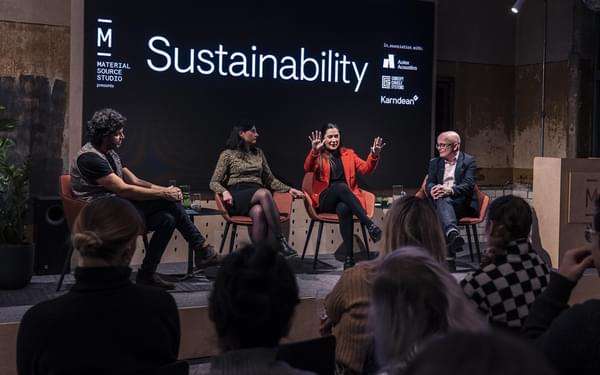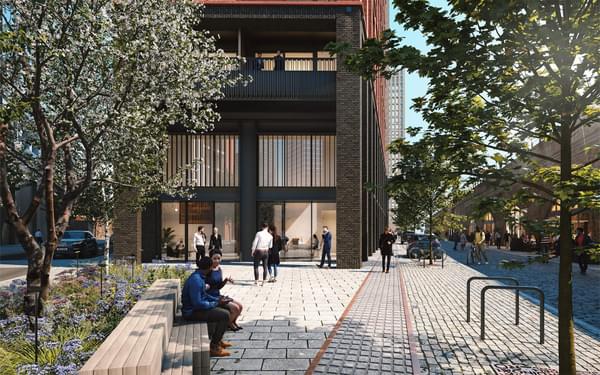
Viviana Cabrera, a consultant in our smart energy and sustainability team speaks to Place North East regarding the need for tougher standards for sustainability targets.
I’m from Quito, Ecuador, where I studied architecture and urbanism at Universidad Central del Ecuador. Almost sixteen years ago, sustainability wasn’t part of the curriculum.
But when a young tutor taught a single class on bioclimatic architecture, it changed the course of my life. I was spellbound by the way it considered the purpose behind every element of a building and the subsequent impact on people. I was determined to learn more about it, even if it meant taking a long and challenging path.
To access education in the UK, I needed to meet the entry requirements. Following a 10-month English course in London, plenty of practice and a small fortune later, I was ready for a Master's in renewable energy and architecture at the University of Nottingham.

In a life-imitating-art moment, I’m now part of Hydrock’s smart energy and sustainability team delivering a groundbreaking climate risk study for University of Nottingham on its Jubilee Campus. It’s a fantastic example of a university doing the right thing by investing the time to identify the long-term physical climate risk to the buildings and infrastructure across their campus.
We’ve recommended adaptation measures, including passive and nature-based solutions, and design interventions to futureproof specific assets. This will ensure the campus is resilient to extreme weather events and a changing climate in the long-term.
Similarly, we’re helping Newcastle University to tackle one of its highest energy consuming buildings with a building services-led approach to reducing carbon emissions.
Though not without its challenges or publicised missed targets, it’s great to see the higher education sector leading the way with this agenda.
However, I often witness short-term profit prioritised over the planet.
Climate action needs to start at the very top to set the tone for everyone else. The UK Government’s announcement to authorise over 100 new licenses in the North Sea as part of a pledge to “max-out” the UK’s oil and gas reserves and changes to other key initiatives, including scrapping the minimum energy efficiency standard for landlords and a five-year delay for the transition away from diesel cars and gas boilers, are the latest example of getting it all wrong with a policy that’s at odds with our net zero trajectory.
There’s a growing body of knowledge and expertise available to help the built environment make the transition. Guidance, proven solutions, and practical recommendations for a definitive journey towards net zero are being constantly evolved by UK professional bodies and industry experts. Many of these include strategies promoting a circular economy, which could help reduce greenhouse gas emissions by up to 80%, create jobs and boost the economy.
For instance, the Climate Emergency Design Guide (LETI), London Plan Guidance (GLA), Circular Economy Guidance for Construction (UKGBC), BREEAM certification, and the 2030 Climate Challenge (RIBA) all have established targets around health and wellbeing, operational energy, embodied carbon, and potable water use.
To ensure our built environment has one voice, we need industry initiatives to align definitions, scopes, targets and methodologies. An example of this is the UK’s first Net Zero Buildings Standard, which is being developed by UK Green Building Council as a cross-industry initiative.
To accelerate sustainability across the North East, this Net Zero Buildings Standard should be adopted as a material planning consideration. Local planning authorities are obligated by law to develop climate action plans. However, from what I’ve seen in the North East, progress is halted by treating them as lower priority or not completely implementing (with benchmarks) such policies in practice.
Finding ways to couple decarbonisation and short-term economic growth would go a long way towards eradicating disparity.
Climate change is having a disproportionate impact on the health of the elderly, children, and the most deprived. These groups are most exposed to the negative effects of climate change, such as extreme heat, air pollution, and waterborne diseases. Decarbonising our economy provides a lever for addressing the social and economic inequalities that make these groups more vulnerable.
Taking a closer look at statistics from Net Zero Newcastle — 2030 Action Plan, the challenges we must tackle together are clear.
Newcastle has a high rate of child poverty (24.7%) and unemployment (3.3%), which makes its residents more vulnerable to the negative effects of climate change. We need clear policies that’ll help Newcastle and the North East reduce its carbon emissions and improve the lives of its most vulnerable residents.
Devolution and more investment in the North East will create opportunities for the region to embed sustainable transport infrastructure and improve our health and wellbeing.

Seeing how Quito tackled and transformed from traditional to sustainable buildings is proof, if needed, that the North East is capable of the same.
Quito really kicked on when the New Urban Agenda shared a vision for a better and more sustainable future at the UN’s Conference on Housing and Sustainable Urban Development in 2016. This included a clear commitment to sustainable policies and strategies that put people first.
In contrast to the UK, energy consumption in Ecuador has little environmental impact because the country uses hydroelectric as its main source of energy, and adaptive heating/cooling strategies sufficiently comply with thermal comfort standards.
Therefore, Quito prioritises water efficiency, alternative transport systems and sustainable urban development.
At planning application stage, the city council makes it a requirement for developers to submit a sustainability statement. This regulates building with bioclimatic criteria, promotes the rational use of energy, and contributes to mitigating the collapse of rainwater and wastewater collection facilities.
By relocating the airport away from the city centre, the council was able to increase the maximum height of buildings to 20 stories which compensates investors by providing room for increased profit.
Benefits, incentives, and tax reductions would fuel an eco-revolution era at a time when we must implement immediate climate change action.
Local government should stop shying away from making sustainability statements a requirement of the planning application across all cities in the UK, even our smallest. While the school of thought might be that our largest cities are most ready with the funding and resources to deliver decarbonisation at scale, you could argue our smaller, under-developed cities are ripe for getting holistic strategies right.
This article originally featured in Place North East in September 2023















